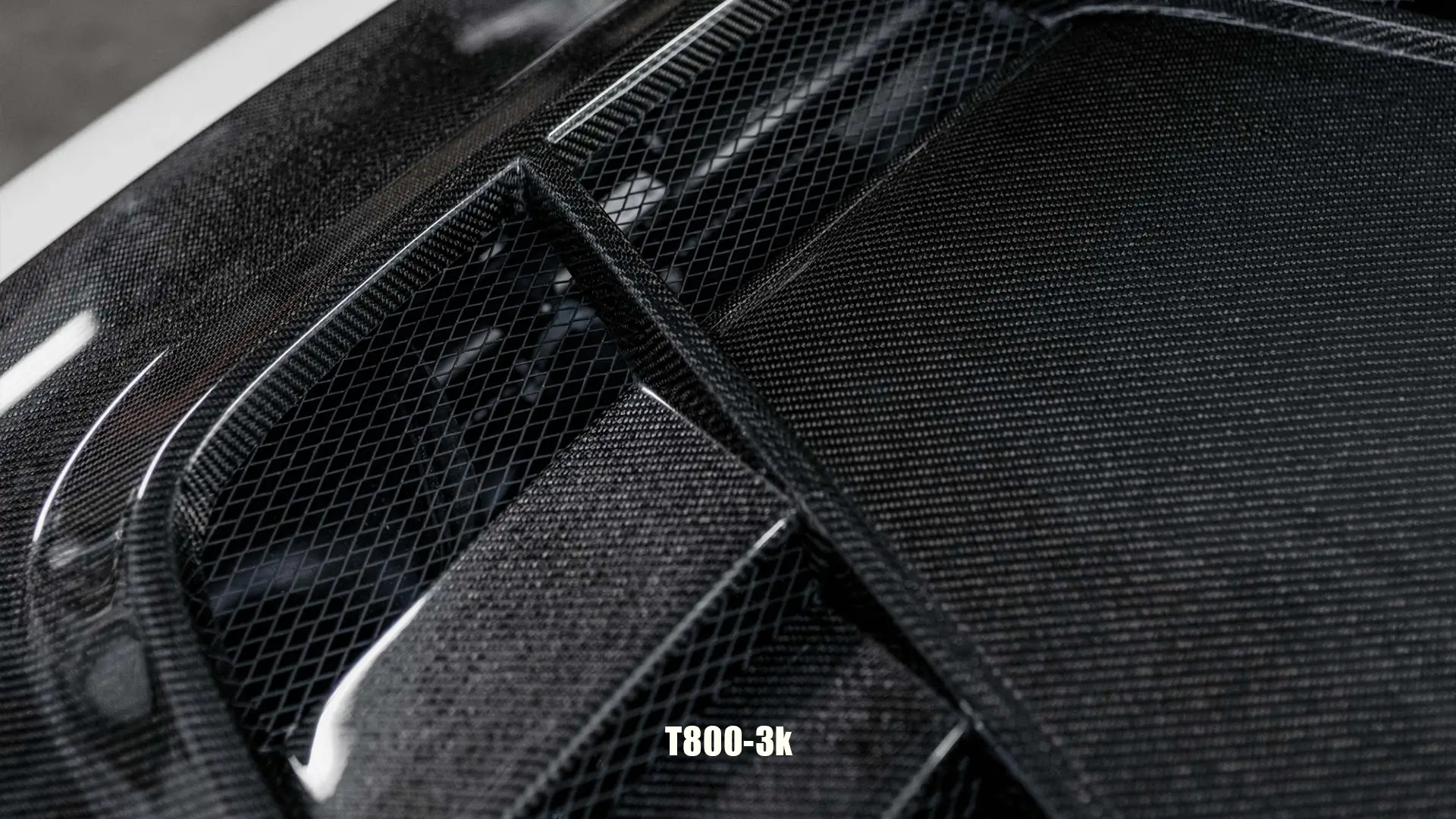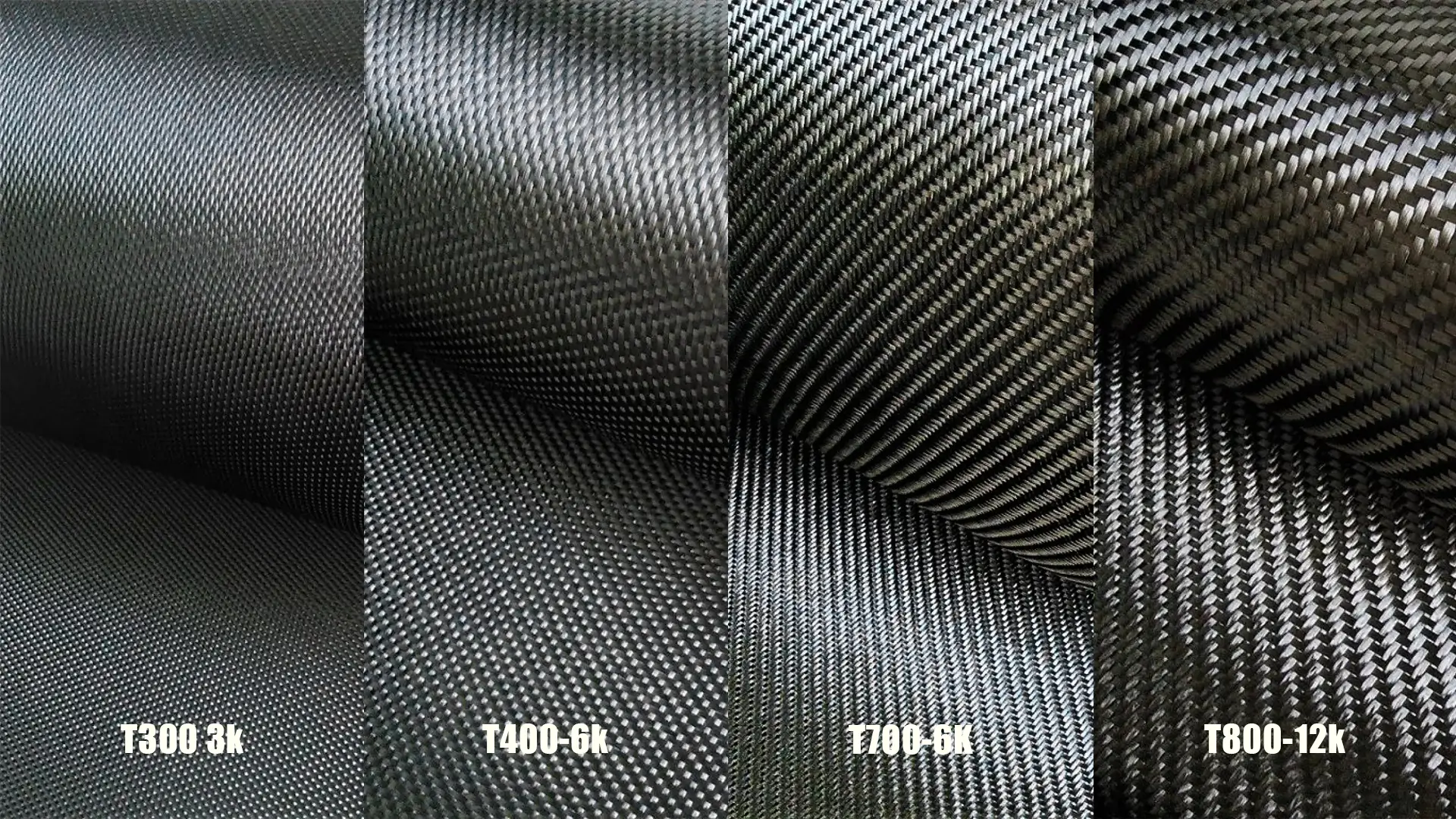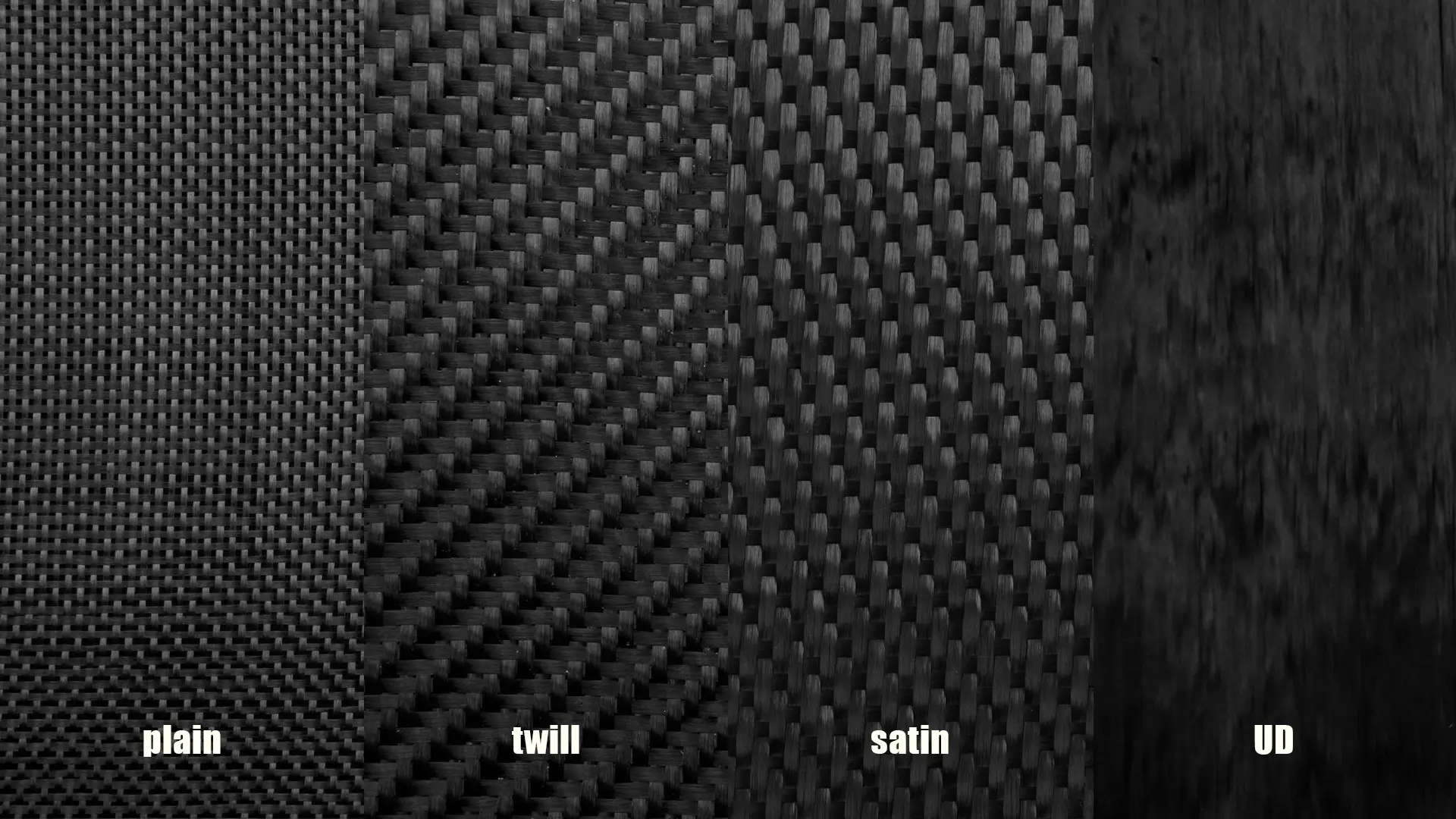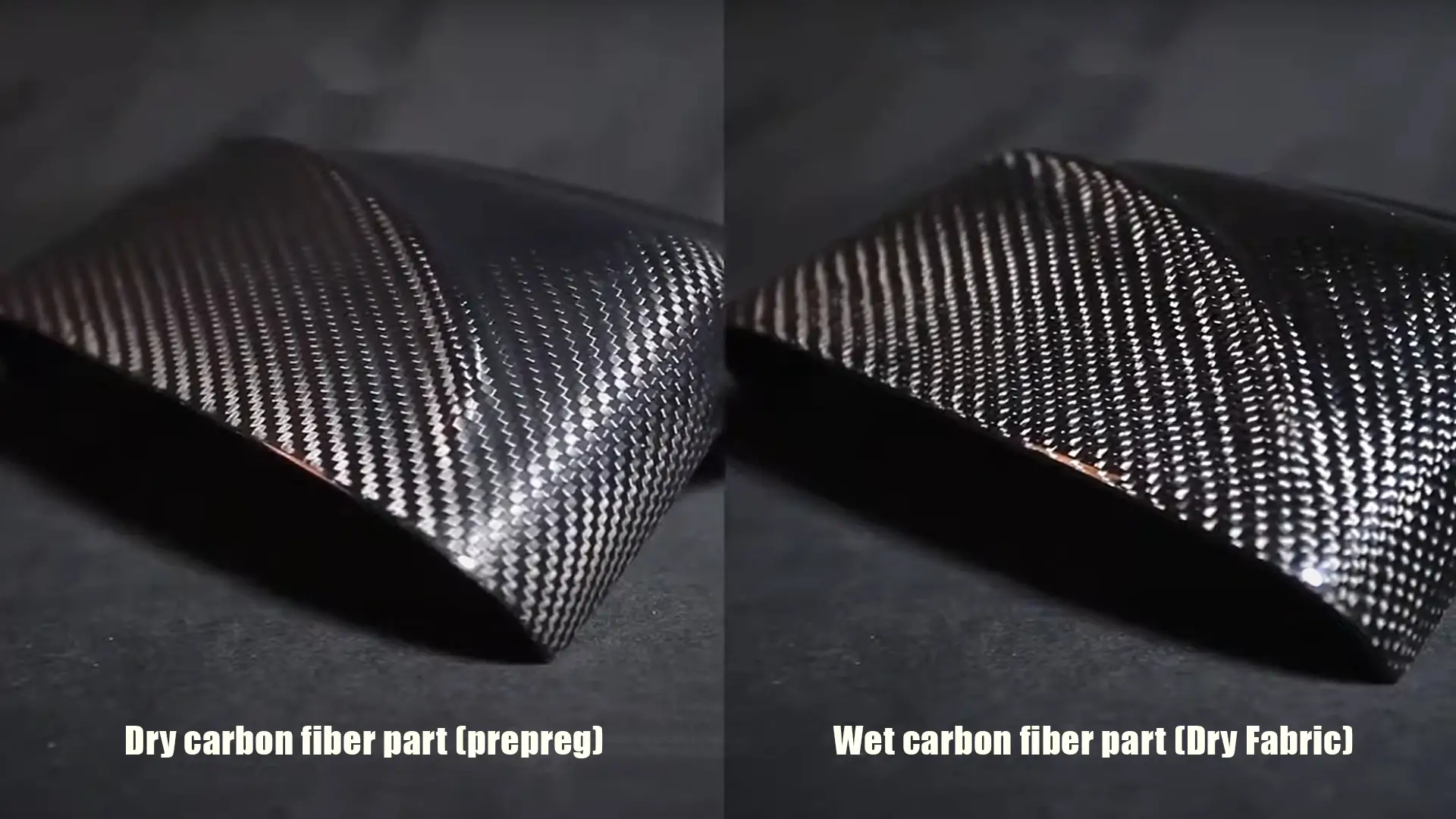What is Tensile Strength in Custom Carbon Fiber?
Tensile strength refers to the maximum stress that a material can withstand while being stretched or pulled before breaking. In the case of custom carbon fiber parts, tensile strength is a crucial property that determines how well the material will perform under tension. High tensile strength means that the carbon fiber part can handle larger forces without failing, which is particularly important in industries like aerospace, automotive, and sporting equipment.
Factors Influencing Tensile Strength
Several factors can affect the tensile strength of custom carbon fiber parts:
- Fiber Type: Different types of carbon fibers, such as high-strength and high-modulus fibers, can offer varying tensile strengths.
- Resin Type: The matrix resin used in carbon fiber composites also impacts tensile strength. Epoxy resins tend to offer excellent strength properties.
- Fiber Orientation: The way carbon fibers are oriented within the composite structure—whether woven or aligned—can influence the part’s strength under tension.
Common grades by tensile strength
| Material Model | Tensile Strength (MPa) | Modulus (GPa) | Application Field |
|---|---|---|---|
| T300 | ~3530 | ~230 | Standard modulus; most commonly used entry-level fiber |
| T400 | ~4000 | ~240 | Improved strength over T300; suitable for general-purpose structural applications |
| T700 | ~4900 | ~230 | Higher strength with same modulus; widely used in automotive and sports fields |
| T800 | ~5490 | ~294 | Higher strength and stiffness; used in aerospace/aviation |
| M40J | ~4000 | ~392 | High modulus grade; for structures requiring stiffness |
| IM7 | ~5700 | ~290 | Similar to T800; commonly used in Europe and North America |
To choose the right tensile strength for your project, consider the type of load the part will experience, as well as the required strength-to-weight ratio. Carbon fiber with higher tensile strength is generally used for parts that will experience higher mechanical stresses, such as structural components in aircraft or car chassis.
What is Tensile Modulus in Custom Carbon Fiber?
Tensile modulus, also known as the modulus of elasticity, measures a material’s ability to resist deformation under stress. In other words, tensile modulus indicates how stiff or flexible a material is when subjected to tension. For custom carbon fiber parts, a high tensile modulus means the material will be stiffer and less prone to stretching, which is important for applications requiring precise dimensions and minimal deformation under load.
Importance of Tensile Modulus
Tensile modulus plays a vital role in applications where rigidity and dimensional stability are crucial. For example, in aerospace or robotics, components need to maintain their shape and resist bending or stretching, even under heavy loads. A high tensile modulus is essential in these situations. On the other hand, parts that require flexibility, like some sporting goods or automotive parts, might benefit from a lower modulus.
Classification by modulus (mainstream standard)
| Type | Tensile Modulus (GPa) | Description |
|---|---|---|
| Standard Modulus (SM) | ≈230–250 GPa | Most widely used; cost-effective (e.g., T300, T700) |
| Intermediate Modulus (IM) | ≈290–320 GPa | Good balance of strength and stiffness (e.g., T800, T1000) |
| High Modulus (HM) | ≈350–450+ GPa | Very stiff but brittle; used in aerospace and high-performance structures (e.g., M40J) |
| Ultra High Modulus (UHM) | >450 GPa | Extremely stiff but fragile; mainly used in space structures or high-end sports equipment |
Tensile Strength vs. Tensile Modulus: What’s the Difference?
While both tensile strength and tensile modulus are critical properties, they serve different functions in determining the performance of custom carbon fiber parts. Here’s a breakdown:
| Property | Tensile Strength | Tensile Modulus |
|---|---|---|
| Definition | Maximum stress the material can withstand before breaking | Material’s resistance to deformation under stress |
| Importance | Affects how much load the material can carry before failure | Determines the material’s stiffness and resistance to bending |
| Application Focus | Structural components where high strength is required | Applications where stiffness and minimal elongation are crucial |
| Measurement Units | Megapascals (MPa) or pounds per square inch (psi) | Gigapascals (GPa) or pounds per square inch (psi) |
Choosing the right balance of tensile strength and tensile modulus is essential. A part with high tensile strength and high tensile modulus can withstand large forces and retain its shape under stress, but it may be heavier and less flexible. On the other hand, a part with lower tensile strength and modulus may be lighter and more flexible but can’t handle as much load.
How to Choose the Right Tensile Strength and Tensile Modulus for Your Custom Carbon Fiber Parts
When selecting custom carbon fiber parts, there are a few key considerations to help you choose the optimal values for tensile strength and tensile modulus.
1. Understand the Specific Requirements of Your Application
The first step in choosing the right tensile strength and tensile modulus is understanding the specific requirements of your project. Will the part be subjected to heavy mechanical loads, or will it need to maintain its shape under stress? Here are a few examples of applications and their typical requirements:
| Industry / Application | Recommended CF Grade | Recommended Model | Reason |
|---|---|---|---|
| 🚗 Automotive parts (body panels, interiors, shells, spoilers) | Standard / Intermediate Modulus | T700 / T800 | Cost-effective, high strength; suitable for both appearance and structural parts |
| 🏍️ Motorcycle/Racing parts (fuel tanks, guards, shells) | Intermediate Modulus | T800 / IM7 | High impact resistance, lightweight, excellent visual appeal |
| 🚲 High-end Bicycles (frames, rims) | Intermediate Modulus | T800 / T1000 | Ultra-lightweight, fatigue-resistant, fast response |
| 🏹 Sports Equipment (fishing rods, rackets, hockey sticks, arrows) | Intermediate to High Modulus | T800 / M40J | High responsiveness, strong and stiff, boosts performance |
| 📷 Photography/Aerial Equipment (tripods, gimbal arms) | High Modulus | M40J / M55J | Very rigid and stable, excellent anti-vibration performance |
| 🛩️ Aerospace (structural parts, UAV wing spars) | High Strength / High Modulus | T1000 / M40J / M55J | Ultimate performance, combines light weight with high strength/stiffness |
| 🤖 Industrial Robots / Robotic Arms | Intermediate to High Modulus | IM7 / M40J | High rigidity for precision, low vibration transmission |
2. Consider the Fiber and Resin Materials
The type of carbon fiber and resin used will significantly affect both tensile strength and tensile modulus. For example:
- High-strength carbon fibers offer excellent tensile strength and are often used for parts that need to withstand significant mechanical forces.
- High-modulus carbon fibers offer better stiffness and lower elongation, making them ideal for parts requiring rigidity.
Additionally, the choice of resin (such as epoxy or polyester) can further influence these properties. Epoxy resins are commonly used with carbon fibers to enhance both tensile strength and modulus, providing a high-quality composite material.
3. Balance Performance and Weight
For many applications, there is a balance to strike between strength, stiffness, and weight. Higher tensile strength and tensile modulus can lead to a heavier part, so it’s essential to assess the weight limitations of your project. In the aerospace and automotive industries, weight is a significant factor, so a balance between tensile strength, modulus, and weight is crucial.
4. Cost Considerations
Parts with higher tensile strength and modulus typically require more advanced manufacturing techniques and materials, which may increase the cost of custom carbon fiber parts. It’s essential to evaluate whether the increased performance justifies the cost for your particular application.

Conclusion
When selecting custom carbon fiber parts, the choice of tensile strength and tensile modulus is crucial for ensuring the performance and durability of your parts, as it requires balancing multiple factors such as strength, stiffness, weight, and cost. Tensile strength determines how much stress a material can withstand before failure, while tensile modulus indicates how stiff the material will be under load. Understanding these properties and how they impact your application is essential for making the right choice.
Final Thoughts
As composite material experts, we are willing to provide you with critical assistance. The correct judgment now avoids cost overruns, delays, and disappointing results later.
Need advice on your custom carbon fiber part? Reach out to our team for expert guidance.




